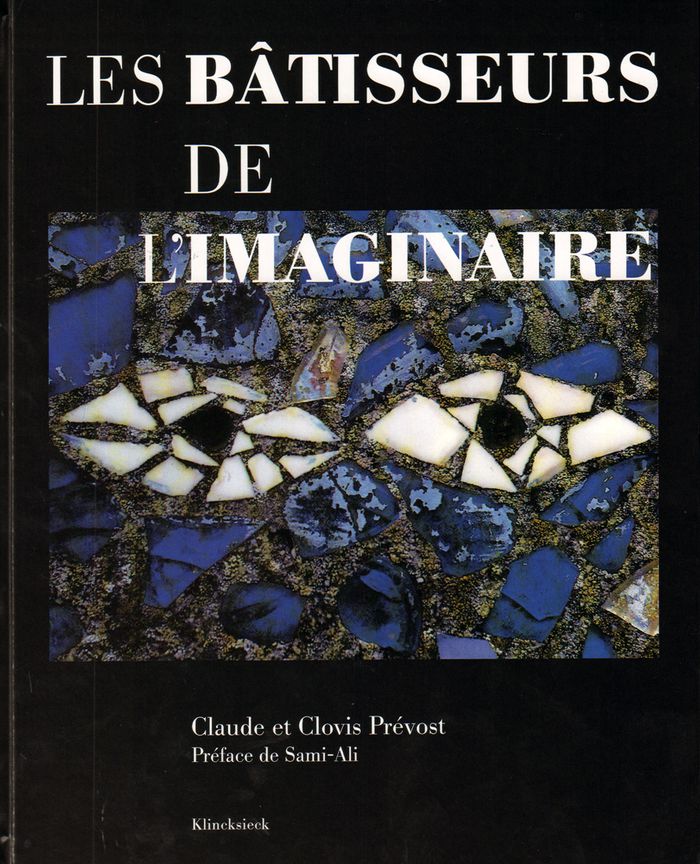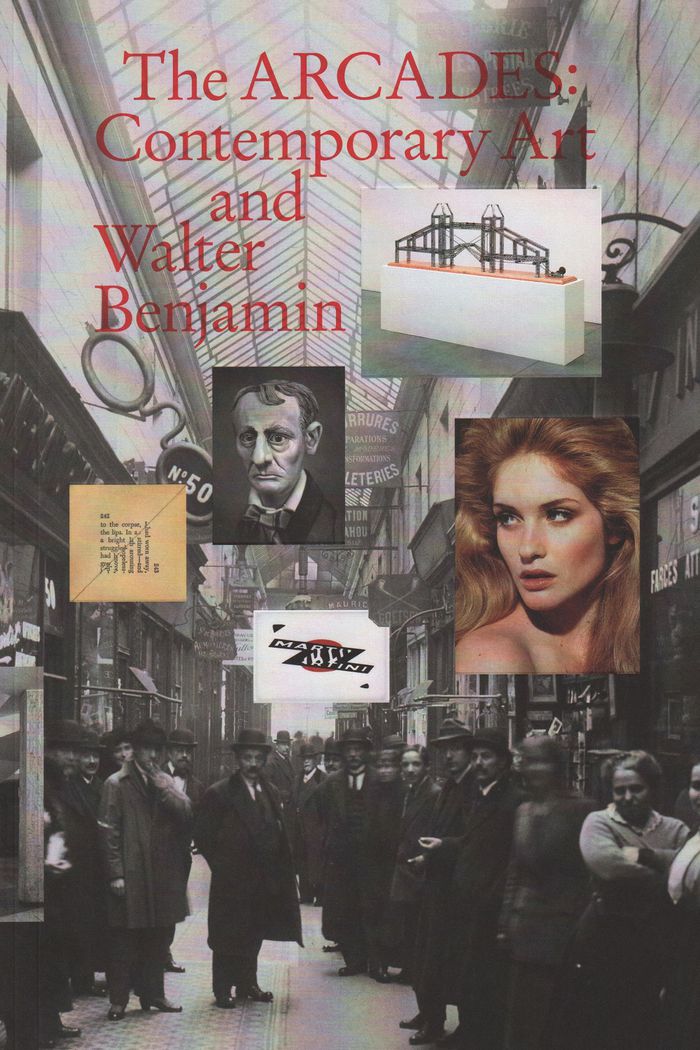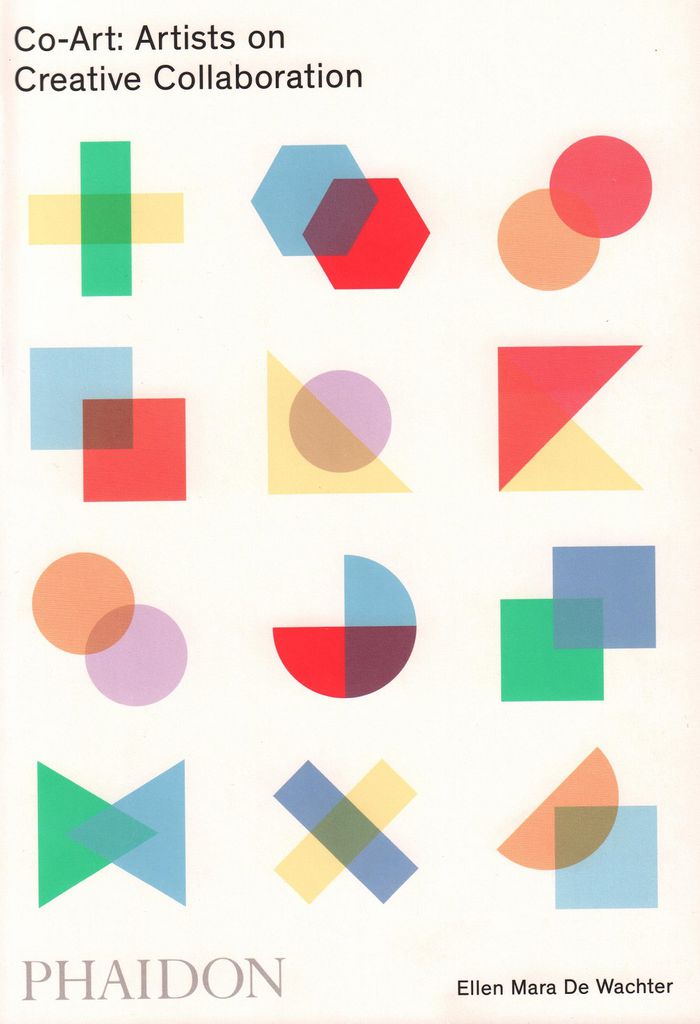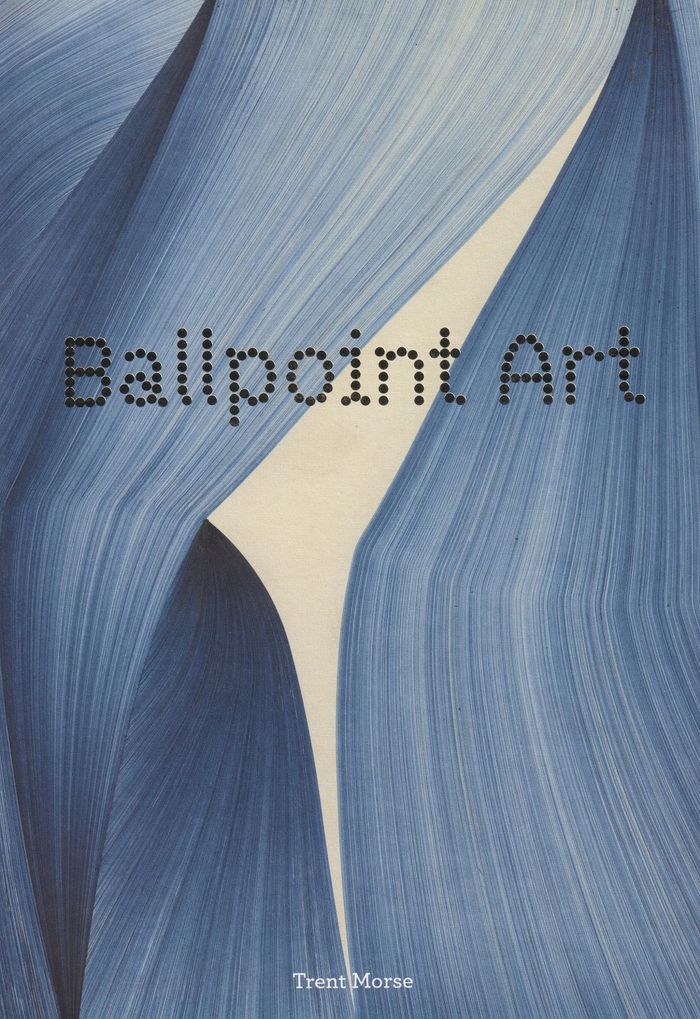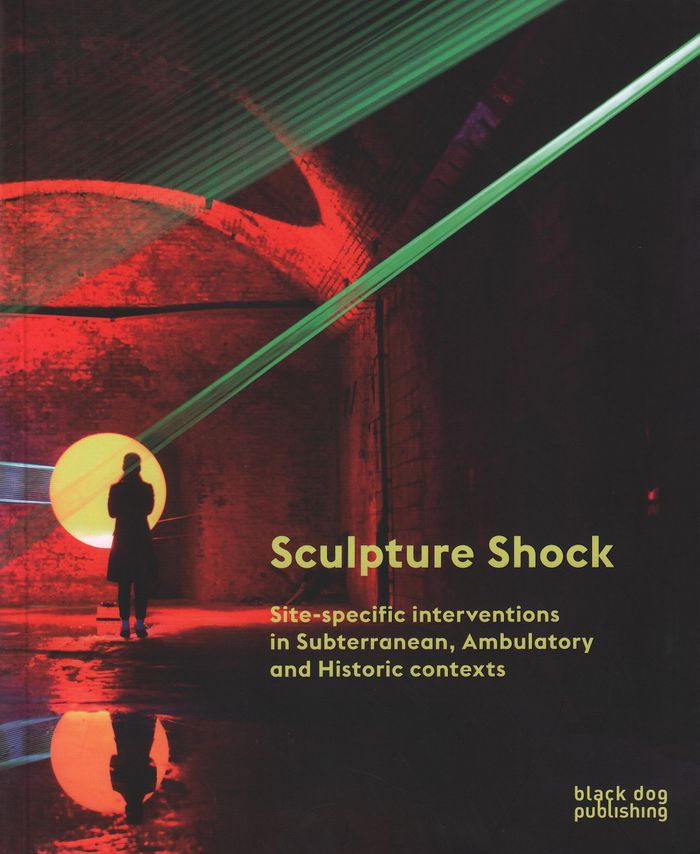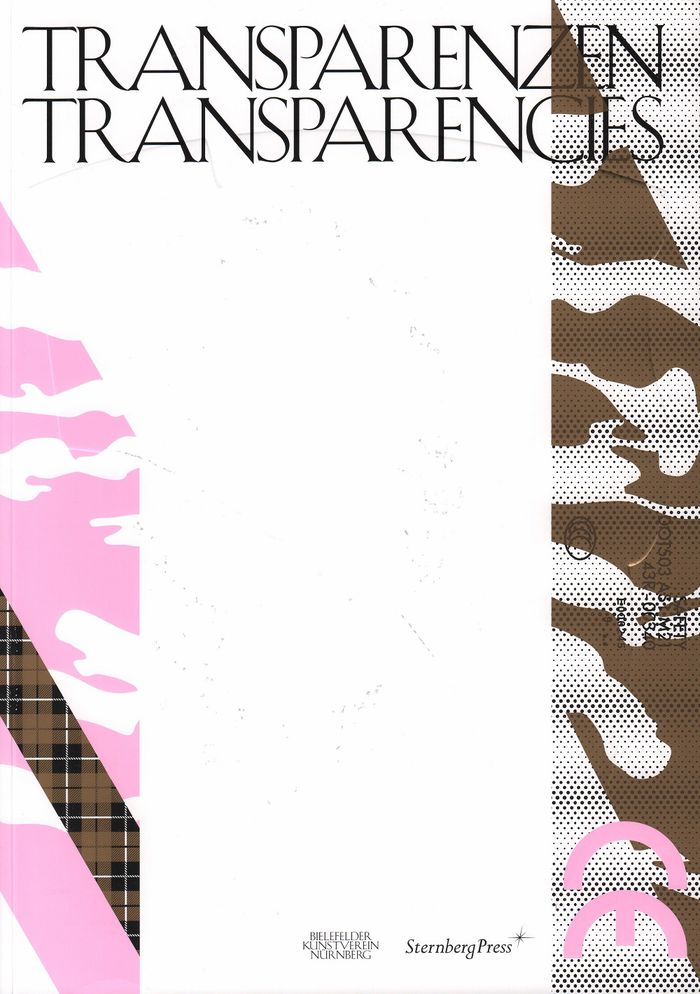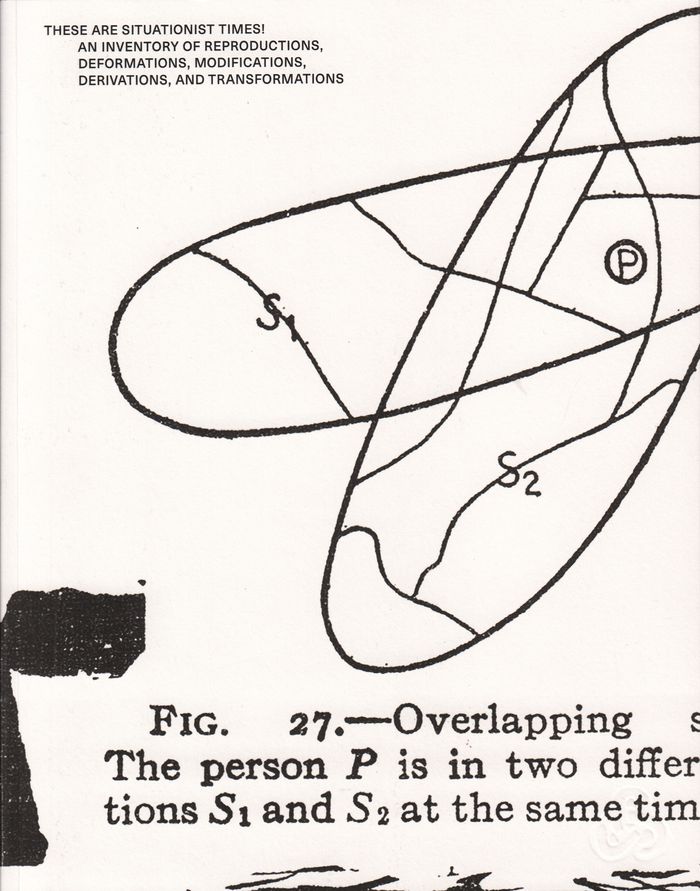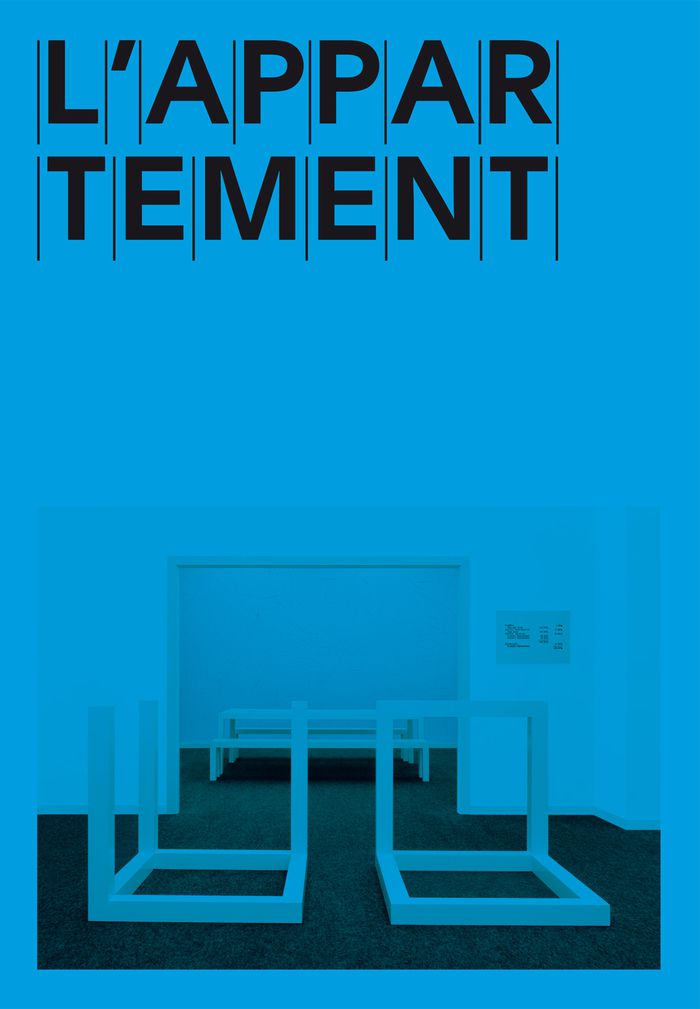$84.95
(available to order)
Summary:
Certains ont entrepris de transgresser règlements et usages pour édifier l’espace qui les habite. En ces lieux de rupture, le rêve de bâtir se nourrit de lui-même : il est un art de vivre et une manière de philosopher personnelle et concrète qui s’enracinent dans l’imaginaire. La confrontation de ces oeuvres singulières nous montre comment l’imaginaire se symbolise à(...)
January 2017
Les bâtisseurs de l'imaginaire
Actions:
Price:
$84.95
(available to order)
Summary:
Certains ont entrepris de transgresser règlements et usages pour édifier l’espace qui les habite. En ces lieux de rupture, le rêve de bâtir se nourrit de lui-même : il est un art de vivre et une manière de philosopher personnelle et concrète qui s’enracinent dans l’imaginaire. La confrontation de ces oeuvres singulières nous montre comment l’imaginaire se symbolise à travers certaines figures formelles, spatiales, comportementales. À quels manques et désirs, à quelle crise, répondent ce besoin de créativité individuelle, cette appropriation démesurée de l’espace ? Là opère la fonction motrice de l’Imaginaire. « Bâtir, habiter, penser » ont des racines communes. Le choix d’un site, d’un volume, d’un motif, d’une matière est l’aveu et la reconnaissance d’une réalité intime. L’imagination matérielle est à l’oeuvre, et le recours à des jeux de miroir donne aux Bâtisseurs de l’Imaginaire cette extraordinaire possibilité d’être autre et autres dans un espace où il n’y aurait plus de séparation entre réel et imaginaire. Ces parcours, domaines, sanctuaires, monuments, jardins ne sont pas nécessairement habitables. Mais dans ces lieux de rencontre, les Bâtisseurs de l’Imaginaire matérialisent la volonté et le désir de renaître et d’appartenir à un monde plus relié, orienté, cosmisé. Contre le manque, l’oubli, la mort, bâtir rend possible le passage exemplaire d’un mode d’être profane et provisoire, à un autre pacifié qui participe d’une fraternité, d’une totalité et de l’éternité.
$89.00
(available in store)
Summary:
Published on the centenary of the Russian Revolution, this book gathers information from the forefront of current research in early Soviet art, providing a new understanding of where art was presented, who saw it, and how the images incorporated and conveyed Soviet values. More than 350 works are grouped into areas of critical importance for the production, reception, and(...)
July 2017
Revolutsiia! Demonstratsiia! Soviet art put to the test
Actions:
Price:
$89.00
(available in store)
Summary:
Published on the centenary of the Russian Revolution, this book gathers information from the forefront of current research in early Soviet art, providing a new understanding of where art was presented, who saw it, and how the images incorporated and conveyed Soviet values. More than 350 works are grouped into areas of critical importance for the production, reception, and circulation of early Soviet art: battlegrounds, schools, the press, theaters, homes and storefronts, factories, festivals, and exhibitions.
$47.95
(available to order)
Summary:
"The Arcades Project" (1927–40), the monumental unfinished work of cultural criticism by Walter Benjamin, is the German philosopher’s effort to comprehend urban modernity through the 19th-century Parisian shopping arcade. "The Arcades: contemporary art and Walter Benjamin" combines artworks with archival materials and poetic interventions to form an original, multifaceted(...)
The Arcades: contemporary art and Walter Benjamin
Actions:
Price:
$47.95
(available to order)
Summary:
"The Arcades Project" (1927–40), the monumental unfinished work of cultural criticism by Walter Benjamin, is the German philosopher’s effort to comprehend urban modernity through the 19th-century Parisian shopping arcade. "The Arcades: contemporary art and Walter Benjamin" combines artworks with archival materials and poetic interventions to form an original, multifaceted response to this collagelike cultural text. Jens Hoffmann astutely pairs works by thirty-six well-known and emerging artists, including Lee Friedlander, Andreas Gursky, Pierre Huyghe, and Cindy Sherman, with the thirty-six “Convolutes,” or themes, in Benjamin’s text. Bound into the main volume is a graphic novelette, from the imagination of Vito Manolo Roma, of Benjamin’s dream the night before he committed suicide while fleeing the Nazis. Scholarly essays by Hoffmann and Caroline A. Jones, texts selected by the poet Kenneth Goldsmith, reproductions of Benjamin’s handwritten notes, and a list of the main Paris arcades discussed by him round out this extraordinary publication.
$49.95
(available to order)
Summary:
Art history is traditionally presented as the individual's struggle for self-expression, yet over the past fifty years, the number of artists working collaboratively has grown exponentially. Co-Art: Artists on Creative Collaboration explores this phenomenon through conversations with twenty-five leading art-world pairs and groups, who offer insight that is relevant beyond(...)
April 2017
Co-Art: artists on creative collaboration
Actions:
Price:
$49.95
(available to order)
Summary:
Art history is traditionally presented as the individual's struggle for self-expression, yet over the past fifty years, the number of artists working collaboratively has grown exponentially. Co-Art: Artists on Creative Collaboration explores this phenomenon through conversations with twenty-five leading art-world pairs and groups, who offer insight that is relevant beyond the art world, making this book vital for all who seek to work creatively and effectively with others.
Ballpoint art
$35.95
(available to order)
Summary:
Ballpoint drawing has evolved into a thriving art form since the pen emerged as a writing tool in the 1940s, when the Hungarian journalist and inventor Laszlo Biro fled war-torn Europe and began manufacturing the pens in Argentina. Throughout the 1950s and '60s, as the ballpoint became cheaper and more accessible, Alberto Giacometti, Jean Dubuffet, Andy Warhol, Francis(...)
Ballpoint art
Actions:
Price:
$35.95
(available to order)
Summary:
Ballpoint drawing has evolved into a thriving art form since the pen emerged as a writing tool in the 1940s, when the Hungarian journalist and inventor Laszlo Biro fled war-torn Europe and began manufacturing the pens in Argentina. Throughout the 1950s and '60s, as the ballpoint became cheaper and more accessible, Alberto Giacometti, Jean Dubuffet, Andy Warhol, Francis Bacon, Nam June Paik, Louise Bourgeois, and many others, sketched with the pens. Today, those who make art with ballpoint pen are no longer confined by size or style. They draw on sculpture, wallpaper, canvas, architecture, and 50-foot sheets of paper, depicting a wide range of subjects - from psychologically charged portraits to mutant animals to abstract scribbles. This book features 30 artists from around the world who are currently creating masterpieces with ballpoint, and discusses their methods, the messages in their work, and their personal connections to the pen.
Sculpture shock: site-specific interventions in subterranean, ambulatory, and historic contexts
$29.95
(available to order)
Summary:
The book reveals the processes and production of nine artists during the Sculpture Shock award (2013-2015) for temporary site-specific interventions. Featuring the work of Alexander Costello MRBS, Lynn Dennison MRBS, Hanna Haaslahti. Patrick Lowry MRBS, David Ogle MRBS,William Mackrell MRBS, Nika Neelova, Amy Sharrocks and Joanna Sands MRBS. This richly illustrated(...)
November 2016
Sculpture shock: site-specific interventions in subterranean, ambulatory, and historic contexts
Actions:
Price:
$29.95
(available to order)
Summary:
The book reveals the processes and production of nine artists during the Sculpture Shock award (2013-2015) for temporary site-specific interventions. Featuring the work of Alexander Costello MRBS, Lynn Dennison MRBS, Hanna Haaslahti. Patrick Lowry MRBS, David Ogle MRBS,William Mackrell MRBS, Nika Neelova, Amy Sharrocks and Joanna Sands MRBS. This richly illustrated publication is contextualised throughout by: Dave Beech, writer, curator and Senior Lecturer in Fine Art at Chelsea College of Art; Richard Cork, British art historian, editor, critic and broadcaster; and Sarah Kent, former visual arts editor of Time Out and the ICA's Director of Exhibitions.
$45.00
(available to order)
Summary:
This catalogue documents the eponymous double exhibition examining the ambivalent notions of transparency and opacity in the globalized world and their reflection in the work of contemporary artists.
June 2016
Transparencies: the ambivalence of a new visibility
Actions:
Price:
$45.00
(available to order)
Summary:
This catalogue documents the eponymous double exhibition examining the ambivalent notions of transparency and opacity in the globalized world and their reflection in the work of contemporary artists.
$63.00
(available to order)
Summary:
Edited and published by the Dutch artist Jacqueline de Jong between 1962 and 1967, ''The Situationist Times'' was an exuberant, multilingual, transdisciplinary magazine that became one of the most exciting and playful publications of the 1960s. Throughout its six diverse issues, the magazine challenged the notion of what it meant to be a situationist. Contributors(...)
These are situationist times! An inventory of reproductions, deformations, modifications, derivations, and transformations
Actions:
Price:
$63.00
(available to order)
Summary:
Edited and published by the Dutch artist Jacqueline de Jong between 1962 and 1967, ''The Situationist Times'' was an exuberant, multilingual, transdisciplinary magazine that became one of the most exciting and playful publications of the 1960s. Throughout its six diverse issues, the magazine challenged the notion of what it meant to be a situationist. Contributors included Aldo Van Eyck, Asger Jorn, Max Bucaille, Pierre Alechinsky and Boris Vian; themes included ''situlogical'' patterns, labyrinths and topology. ''These Are Situationist Times!'' provides a history of the magazine, also probing its contemporary relevance and presenting the material de Jong assembled in the early 1970s for a never-realized seventh issue devoted to pinball.
books
$108.00
(available to order)
Summary:
How the modernist avant-gardes from Dada to constructivism reconceived their roles, working as propagandists, advertisers, publishers, graphic designers, curators and more, to create new visual languages for a radically changed world. These “engineers,” “agitators,” “constructors,” “photomonteurs,” “workers”—all designations adopted by the artists themselves—turned away(...)
May 2020
Engineer, agitator, constructor: the artist reinvented
Actions:
Price:
$108.00
(available to order)
Summary:
How the modernist avant-gardes from Dada to constructivism reconceived their roles, working as propagandists, advertisers, publishers, graphic designers, curators and more, to create new visual languages for a radically changed world. These “engineers,” “agitators,” “constructors,” “photomonteurs,” “workers”—all designations adopted by the artists themselves—turned away from traditional forms of painting and sculpture and invented new visual languages. Central among them was photomontage, in which photographs and images from newspapers and magazines were cut, remixed, and pasted together. Working as propagandists, advertisers, publishers, editors, architects, theater designers and curators, these artists engaged with expanded audiences in novel ways, establishing distinctive infrastructures for presenting and distributing their work. Published in conjunction with a major exhibition, this publication marks the transformative addition to MoMA from the Merrill C. Berman Collection, one of the great private collections of political art. Illuminating the essential role of women in avant-garde activities while mapping vital networks across Europe, this richly illustrated book presents the social engagement, fearless experimentation and utopian aspirations that defined the early 20th century, and how these strategies still reverberate today.
books
May 2020
L'appartement
$46.95
(available to order)
Summary:
Présent au MAMCO depuis l'ouverture de l'institution au public, L'Appartement est un espace particulier dans le parcours du musée. Il s'agit de la reconstitution de l'appartement de Ghislain Mollet-Viéville situé à l'origine au 26 de la rue Beaubourg à Paris. Occupé et aménagé par ce dernier de 1975 à 1991, ce lieu de vie était aussi un lieu d'échanges et d'exposition(...)
February 2020
L'appartement
Actions:
Price:
$46.95
(available to order)
Summary:
Présent au MAMCO depuis l'ouverture de l'institution au public, L'Appartement est un espace particulier dans le parcours du musée. Il s'agit de la reconstitution de l'appartement de Ghislain Mollet-Viéville situé à l'origine au 26 de la rue Beaubourg à Paris. Occupé et aménagé par ce dernier de 1975 à 1991, ce lieu de vie était aussi un lieu d'échanges et d'exposition d'œuvres précisément choisies. L'art minimal et conceptuel y tenaient une place essentielle pas simplement à travers des œuvres mais aussi comme forme de vie. Désormais partie intégrante de la collection du MAMCO, L'Appartement propose, entre autres, des pièces de Donald Judd, Carl Andre, Claude Rutault, Art & Language, Joseph Kosuth, Lawrence Weiner et André Cadere. Cet ouvrage en est la présentation détaillée à travers un essai de Patricia Falguières, un entretien avec Ghislain Mollet-Viéville et une étude de chaque œuvre par Thierry Davila. Il montre aussi combien collectionner signifie inventer un type singulier de fréquentation de l'art.
